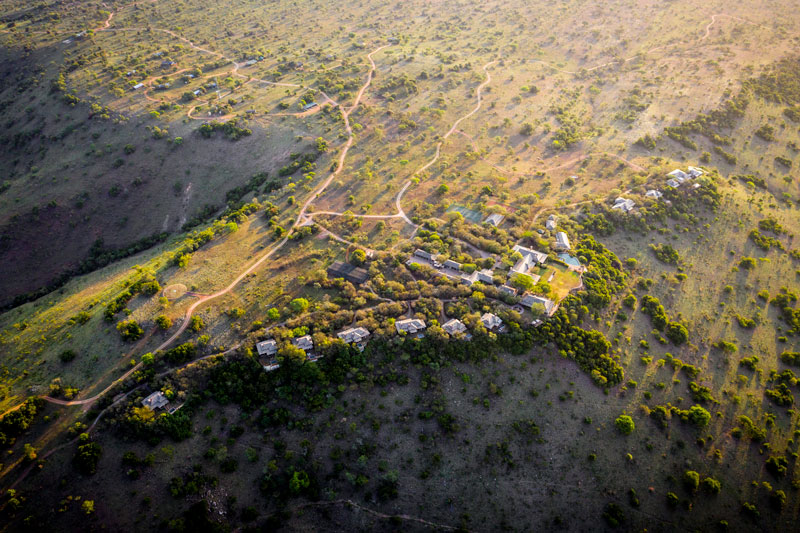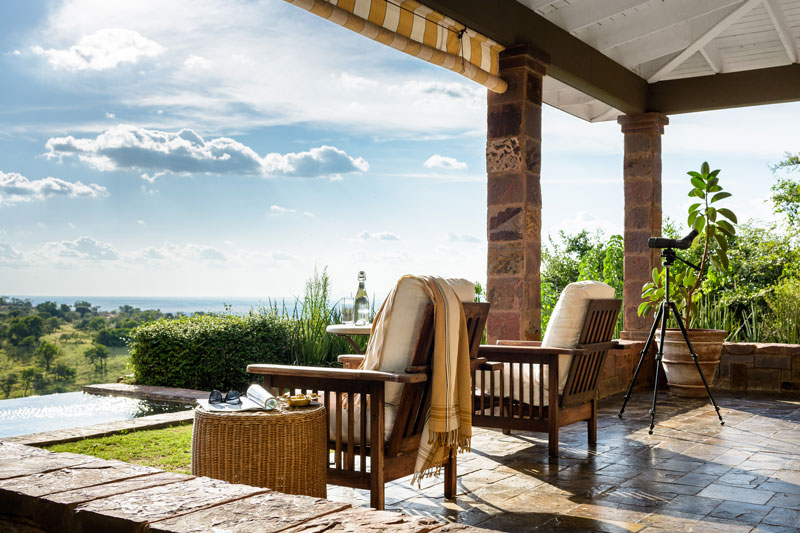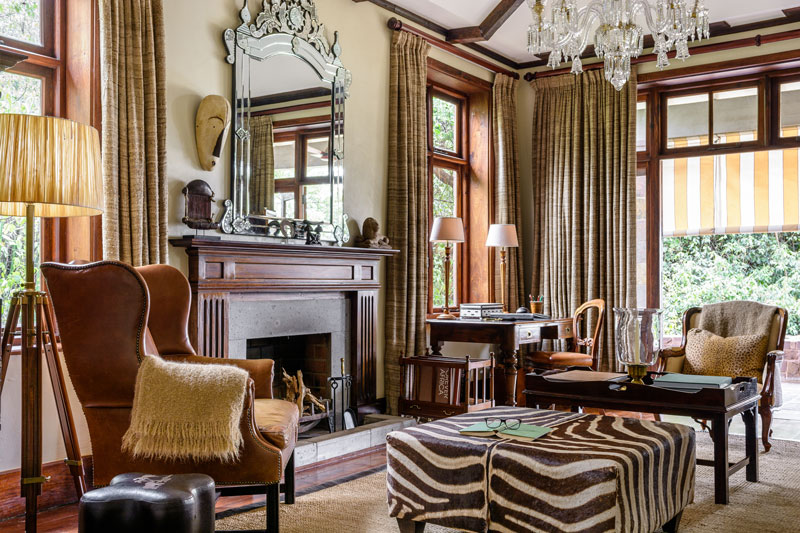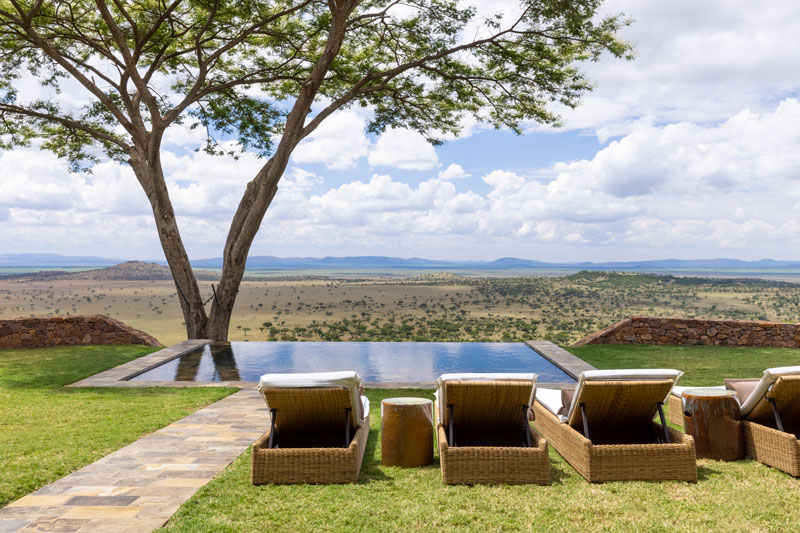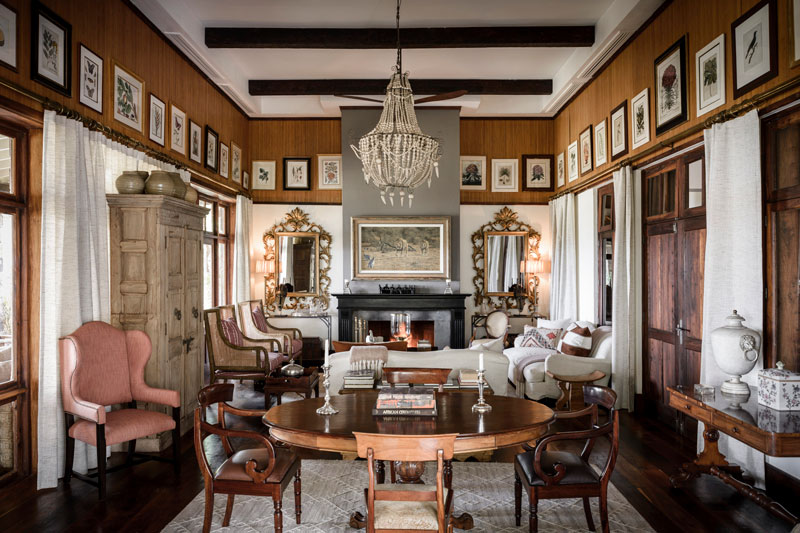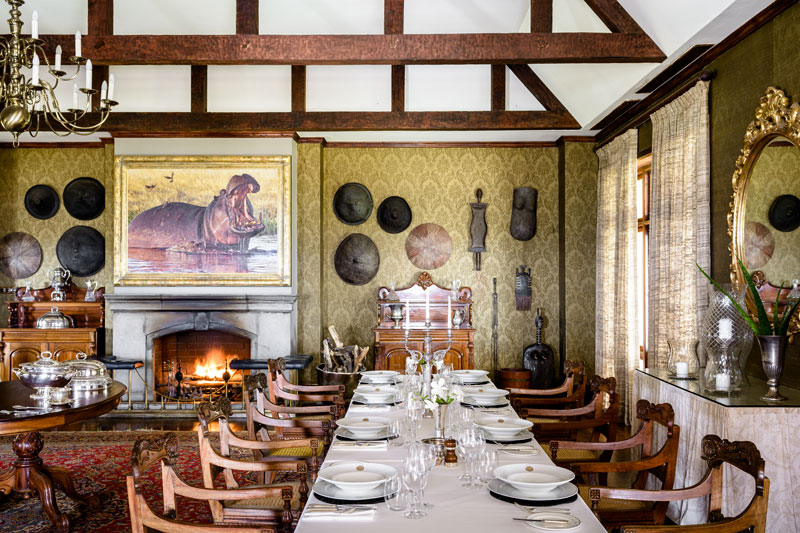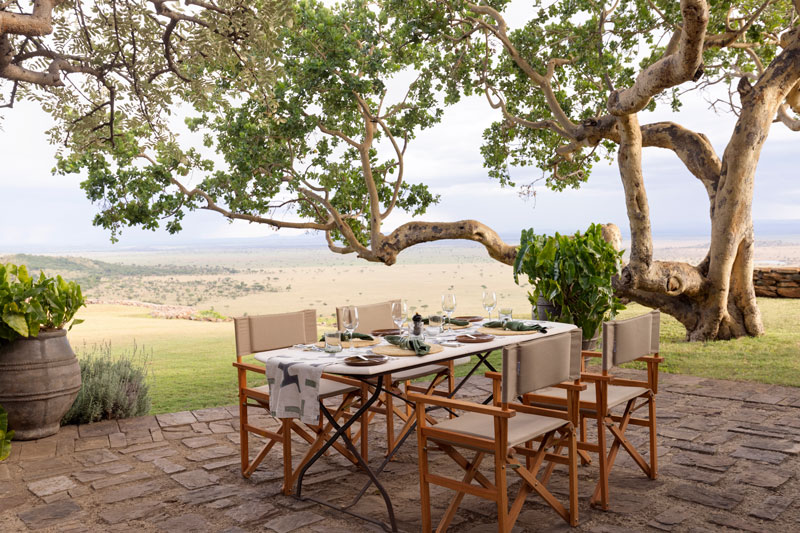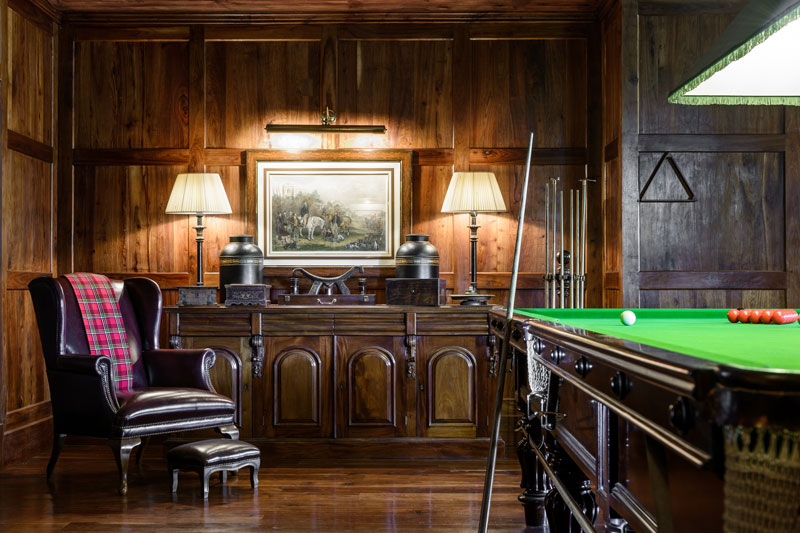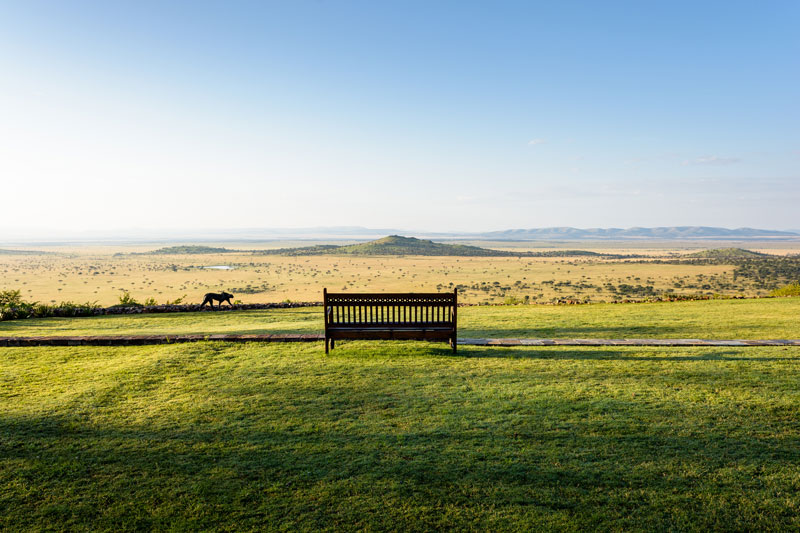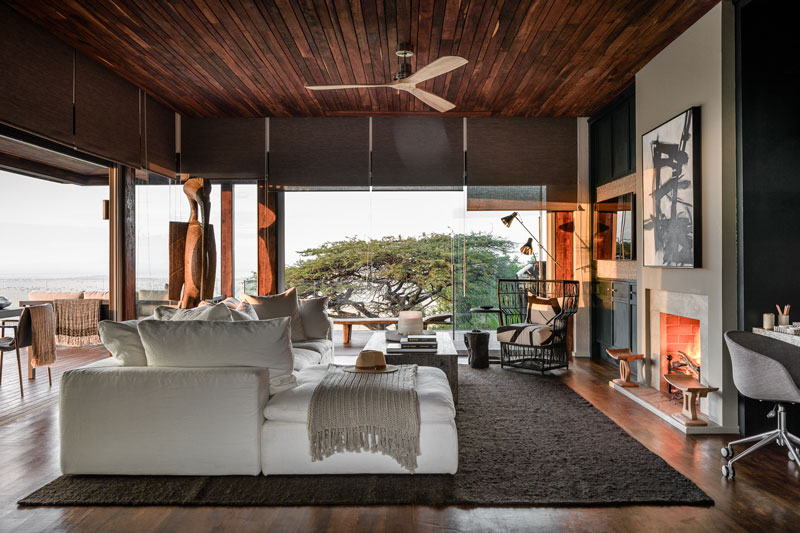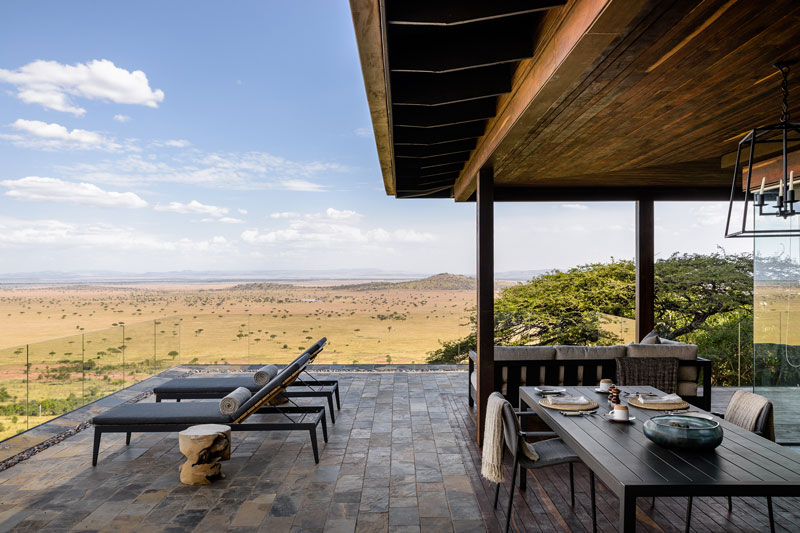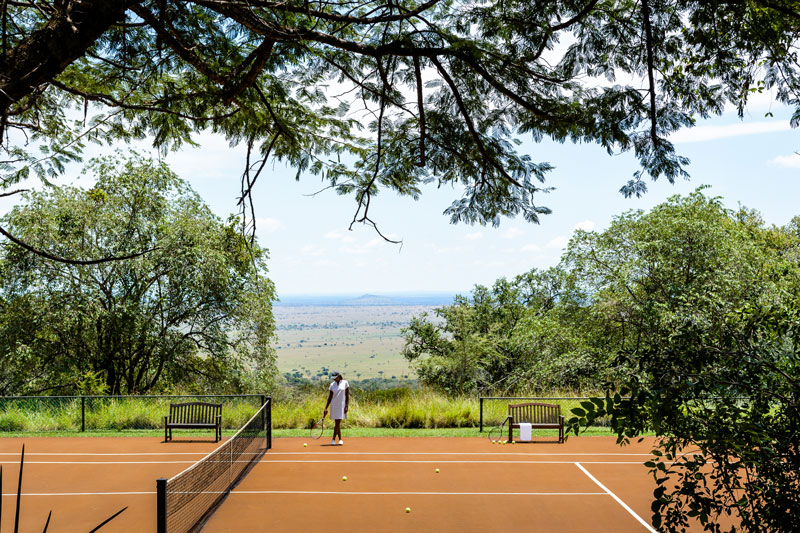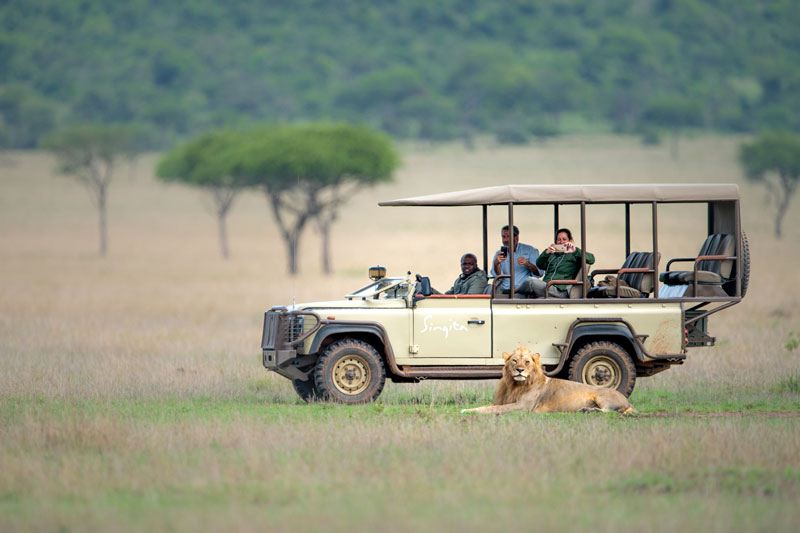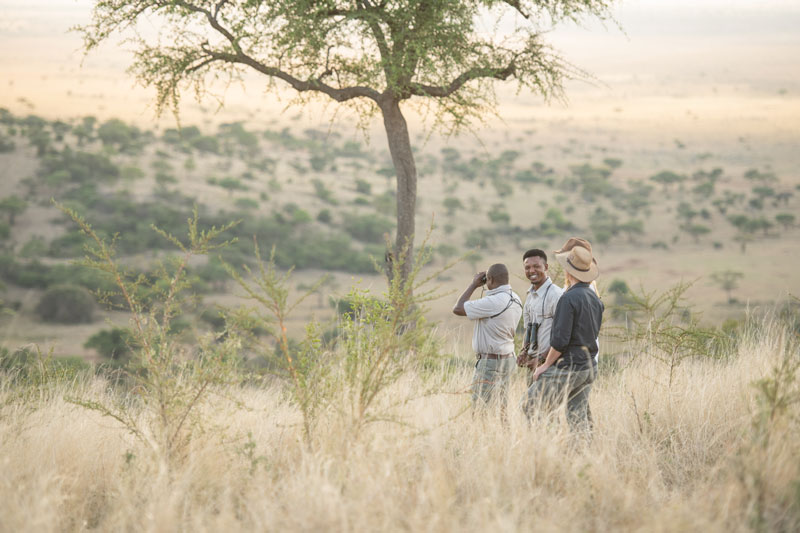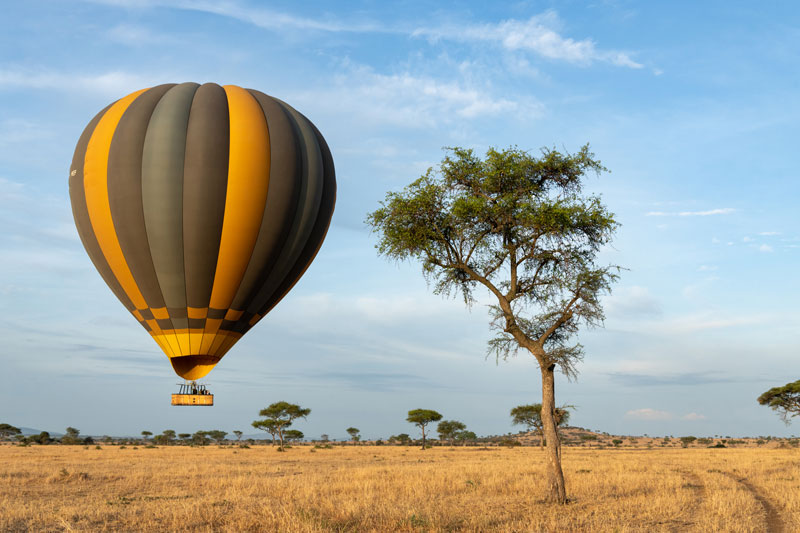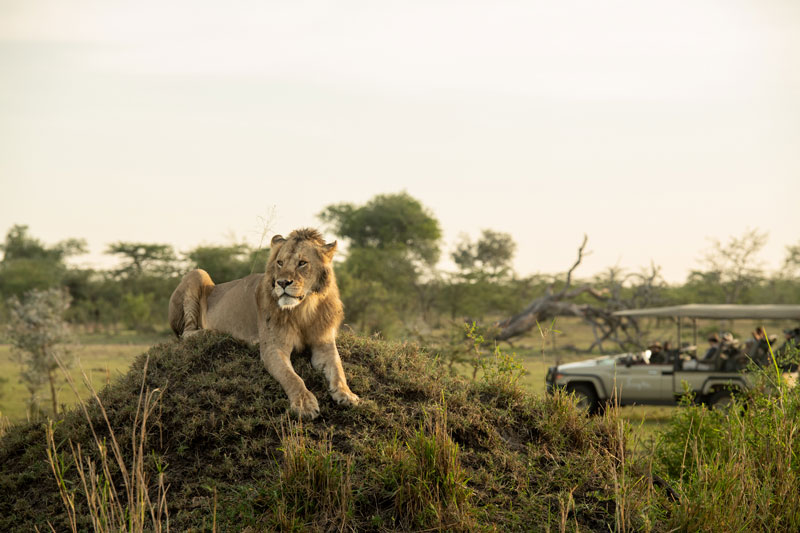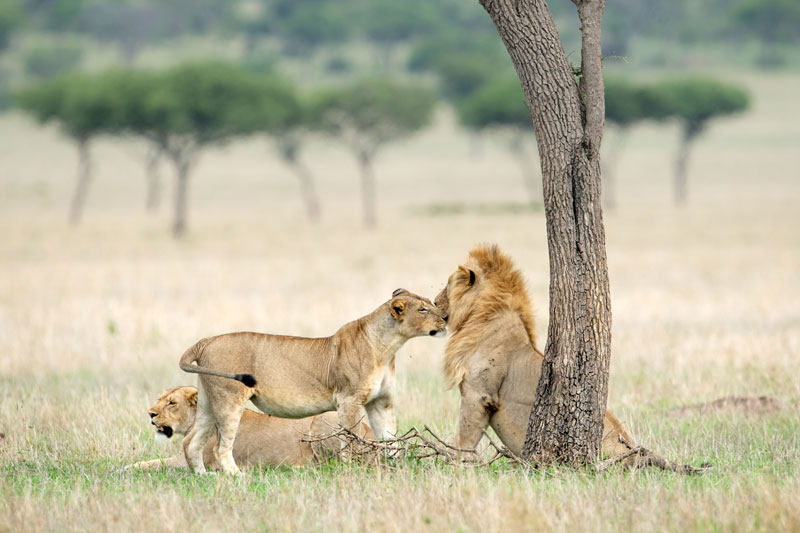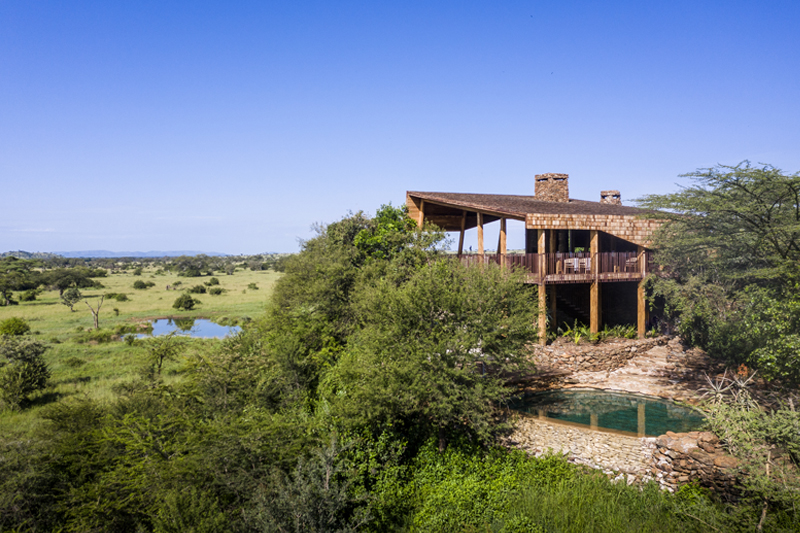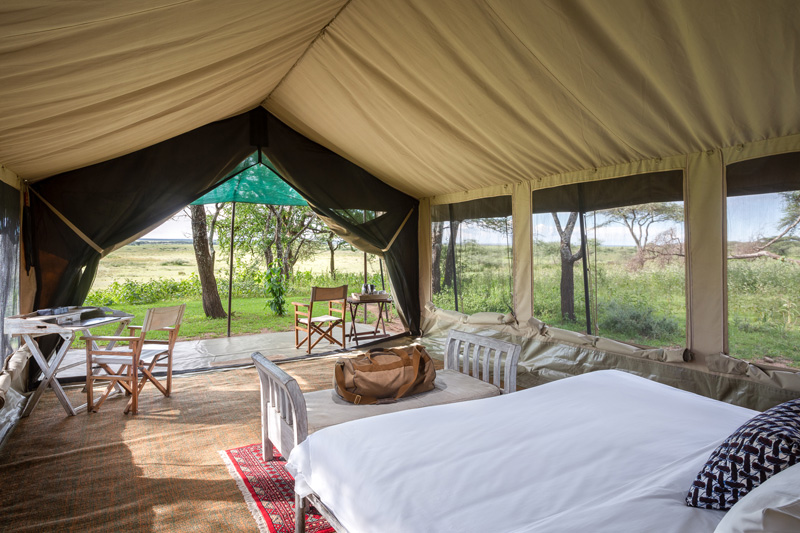Singita Sasakwa Lodge
Singita Sasakwa Lodge is situated in the centre of the private Grumeti Reserve, bordering the western corridor of the Serengeti National Park.
Singita Sasakwa Lodge is a sophisticated and luxurious property built on a high ridgeline with spectacular panoramic views over the Grumeti Reserve plains. The lodge is built in the style of a 1920s homestead and is Singita’s flagship property on the reserve. Sasakwa Lodge is one of the most luxurious in Tanzania and with superb food and service, reliable year round wildlife and great guiding, it is an outstanding property. With solid stone walls, glass doors and windows, air-conditioned suites and every possible modern comfort you wish for, it does feel more like a small ‘hotel’ and with its lofty location, you can feel quite removed from its wilderness setting. For a more down to earth accommodation option, whilst still keeping the superior feel of the Singita brand, sister properties Faru Faru Lodge or Sabora Tented Camp offer more of a bush feel.
Rooms
The lodge caters for around 32 guests in selection of one, two, three and four bedroomed cottages and one Hillside Suite. Each has en suite facilities (including a bath and shower) private garden and plunge pool, air-conditioning, a separate lounge and the most wonderful views. The two, three and four bedroom cottages have one master bedroom and the further bedrooms are slightly smaller, but all en suite. The four bedroomed cottage has the addition of a private dining room and small kitchen. The two storey Hillside Suite has a sitting room, outdoor dining space and terrace on the first floor, with en suite bedroom, extensive outdoor relaxation space and private rim-flow pool on the lower floor. The Hillside Suite also comes with butler service and a private vehicle and guide for maximum exclusivity and flexibility.
Central Areas
The central areas of the main lodge consists of a reception hallway, indoor and outdoor lounges and dining areas, a media room including TV, a breakfast room, bar, wide terrace, open lawn area with croquet and a large swimming pool with an infinity edge. As you may expect, all of this is accompanied by the trademark awe-inspiring view. There is also a gym and health spa (treatments at extra cost), a gift shop and tennis courts.
Facilities
Wi-Fi – Yes
Power for Charging – Yes
Swimming Pool – Yes
Habitat & Wildlife
Grumeti Reserves is located adjacent to the Western Corridor of the Serengeti, bordering the national park, and encompasses 350,000 acres of unrivalled wilderness. With only three properties in the reserve, game viewing becomes a very private and exclusive experience. The area forms part of the famous migratory route, which is travelled by hundreds of thousands of animals every year, but there also remains good resident game.
With an area of some 14,000 sq. km, Serengeti is probably the best-known wildlife sanctuary in the world. The ecosystem includes the National Park itself, the Ngorongoro Conservation Area, Maswa Game Reserve and Kenya’s Masai Mara National Reserve, together forming one of the most complex and least disturbed ecosystems on earth. The landscape was originally formed by volcanic activity in the Ngorongoro highlands and it varies from the open short grass plains in the south, to savannah and scattered acacia woodlands in the centre, to extensive woodland and black clay plains in the west, to hilly wooded grassland in the north. Most of the permanent water is found towards the northern and western areas, the lack of permanent water and food in the south being the main reason for the annual migration.
The park is home to approaching 2,000,000 wildebeest, 500,000 Thomson’s gazelle and 250,000 zebra: the largest concentration of plains game in Africa. More than 30 species of herbivores are found here, as well as all the major predators and nearly 500 species of birds.
The central and western sections of the park are fantastic for game viewing all year round, though wild dogs and rhino are not encountered. The central region around Seronera is especially productive for game viewing but does get very busy with tourists. To the south-east of Seronera is a much more exclusive game viewing area that stretches towards the border of the park. To the north-west the ‘Western Corridor’ stretches out along the course of the Grumeti River. This region is busiest in June and early July when the wildebeest and zebra herds pass through on their journey north. The habitat of the region changes dramatically from vast open plains in the east to dense riverine woodland along the Grumeti River in the west.
Activities
Game viewing activities are undertaken in open four wheel drive vehicles and include both day and night game drives. Nature walks are also available. Hot air ballooning is available at an extra cost (ballooning must be arranged in advance to be guaranteed). For guests interested in learning more about the work of the Singta Grumeti Fund’s conservation work, there is the opportunity to visit an observation post and meet a game scout (note this involves a steep walk up a dirt path to reach the post). Community project visits can also be arranged at extra cost.
Seasons
Sasakwa Lodge is open all year round. The migration season in the western Serengeti runs from late May to early July, however game viewing is good year round.
Children of all ages are accepted at Singita Sasakwa Lodge and the two, three and four bedroom cottages offer wonderfully spacious accommodation for families of different sizes. There are a range of activities on offer to children from a mini ranger’s course to arts and crafts and cookery. Children need to be 16 years to join a walking safari. Sasakwa would make for a wonderfully luxurious stay for any family, with a secure feeling of permanence and plenty to occupy and engage guests of all ages.
Singita Grumeti works in partnership with the non-profit Grumeti Fund to generate the funds necessary to ensure the long-term sustainability of the 350,000 acre reserve through wildlife conservation and community development programs in and around the area. Some examples of their work are given below.
Conservation successes include the recovery of many species including buffalo, wildebeest and elephant populations, and in 2019, the Grumeti Fund carried out the largest single relocation and reintroduction of nine critically endangered Eastern Black Rhino.
The Grumeti Fund Anti Poaching Unit has over 100 anti poaching scouts working to protect the area from illegal hunting with the help of a canine unit who are trained to track and uncover items such as snares, ammunition, rhino horn and ivory by Working Dogs for Conservation (WD4C). Their handlers also undergo training by WD4C to manage, train and look after the welfare of their dogs. It is hoped that just the presence of the dogs on the plains will deter would be poachers from entering the protected areas.
To better understand local ecological systems and measure the effectiveness of community and conservation work, the Grumeti Fund invests significantly in research and monitoring programs. Established in 2020, RISE (Research & Innovation for Serengeti Ecosystem) aims to develop and support research initiatives that provide tangible and sustainable solutions to benefit the people and wildlife of the Serengeti ecosystem and beyond. They are committed to supporting local talent and early-stage conservationists, and making space for women in the conservation research and protected area management.
The Fund supports an annual all-female three day run across the Serengeti which takes place to raise funds and awareness for female empowerment programmes, helping to encourage a new generation of female conservation leaders.
The Grumeti Fund’s Teaching Support Program (TSP) addresses challenges to local education by placing 52 young, passionate, and recently graduated teachers in 26 local primary schools to boost the teacher-student ratio, improve academic achievement, and increase students’ potential to realise their future ambitions and potential in life.
Singita Serengeti adopted a sustainability framework which serves as a basis for reducing greenhouse gas emissions, saving water, improving waste management and recycling, having a positive impact on local economies and conserving precious natural resources. These sustainability principles are critical to the fulfilment of Singita’s goal of being a completely carbon-neutral operation.



